The freestyle stroke, also known as front crawl, is the fastest and most efficient of the swimming strokes used in competition.
This is why it is used in freestyle races and is also often the favorite stroke for experienced swimmers and triathletes.
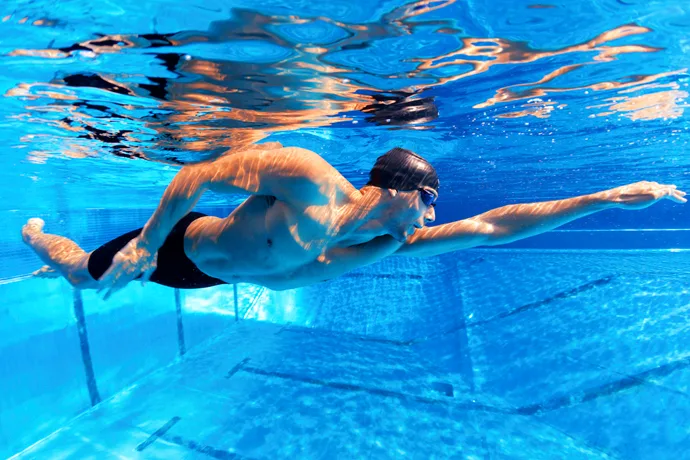
Freestyle Swimming Technique
In the next section, we will describe the swimming technique of the freestyle stroke/front crawl.
Body Movement
The freestyle stroke is swum in a horizontal position with the body facing down. The body rolls from one side to the other, always turning to the side of the arm that is currently pulling in the water.
The head remains in a neutral position, face down, except when breathing.
To enable breathing, the body rolls a little further to the side during the arm recovery, and the head also turns to the side until the mouth is above the water surface.
More detailed information about body movement in front crawl can be found here.
Arm Movement
In the freestyle stroke, the arms execute alternating movements. While one arm moves and pulls underwater from an extended forward position to the hip, the other arm recovers above water from the hip to the extended forward position.
Once this is done, the arms switch roles, such that each arm pulls and recovers once over the entire stroke cycle.
The arm movements are described in more detail below:
1. Starting position: For our discussion, we assume that the starting position is with the arm extended forward underwater at the end of the previous arm recovery.
2. Downsweep: The forearm moves down while the elbow remains high in the water. The upper arm moves outward and backward. No force is used in the downsweep movements; the swimmer is only preparing the next phase of the arm stroke.
3. Catch in the high elbow position: The forearm and palm are in line, vertical and facing backward, while the elbow is still high in the water. The upper arm is outside the shoulder. This is the beginning of the propulsive phase.
4. Insweep: The arm moves as a unit, like a big paddle, pulling at the water. The upper arm moves backward and inward, while the hand sweeps from outside the shoulder to below the belly.
5. Upsweep: The hand changes direction and moves from below the belly toward the hip, now pushing against the water. At the same time, the body rolls onto its side so that the hip moves out of the way of the hand.
6. Release: The arm leaves the water at the hip, with the elbow leading, and the forearm and hand following.
7. Recovery: The arm swings forward, with the forearm relaxed and dangling.
8. Entry and extension forward: Once the hand has passed the head, it dives back into the water, and the arm extends forward underwater. At the same time, the head and body roll back to a neutral position.
9. Synchronization of arms: As soon as the recovering arm dives into the water, the other arm begins pulling backward in the water, and so on.
Please note that there is a bit of overlap in the underwater phases of both arms: the recovering arm will have already entered the water while the other arm is still pulling underwater.
This swimming technique is called front-quadrant swimming.
More detailed information about the arm movement in the front crawl can be found here.
Leg Movement — The Flutter Kick
In the freestyle stroke, the legs execute a flutter kick. This means that they perform small, fast movements with stretched feet while the hips and knees bend slightly.
The flutter kick uses alternating and opposite movements. While one leg moves up, the other moves down, and vice versa.
The flutter kick is performed continuously over the entire stroke cycle.
The flutter kick is a simple yet efficient kicking technique and complements the alternating arm movements of the front crawl stroke quite well.
More detailed information about the flutter kick in front crawl can be found here.
Breathing
To breathe, the swimmer turns his head to the side during the arm recovery until his mouth is above the water surface. The swimmer inhales quickly and then turns his head back down.
The exhalation begins as soon as the mouth is under the water surface again and continues until the next breathing arm recovery.
The most common breathing patterns are breathing with every other arm stroke (always on the same side) and breathing with every third arm stroke (changing breathing sides each time).
More detailed information about front crawl breathing can be found here.
Common Mistakes in Freestyle Swimming
In the following series of articles, we will discuss common mistakes in the techniques of freestyle swimmers.
Putting on the Brakes
“Putting on the Brakes” in front crawl: This is a common mistake made by front crawl swimmers, where water is pushed forward during the underwater phase at the end of arm recovery.
This, in turn, creates drag and slows down the swimmer.
Overreaching Arm Recovery
Avoid an overreaching arm recovery in the freestyle stroke: reaching too far at the end of the arm recovery can cause problems. This article discusses why this is the case and what to do to prevent it.
Wide Arm Recovery
The problems associated with a wide arm recovery: This article discusses why a wide arm recovery wastes energy, creates drag, and possibly, strains the shoulders.
Also, tips are provided on how to correct this mistake made when swimming.
Swimming Tips
A few simple tips for the freestyle stroke: In this article, our reader Zach provides a few tips to improve your freestyle stroke.
Learn to Swim Freestyle
Learning freestyle is challenging for several reasons.
The face is underwater for most of the stroke cycle, and you have to roll to the side to breathe. The arms and legs execute alternating opposite movements.
Therefore, it takes a lot of practice to perform all the different movements of this swimming stroke correctly and simultaneously.
However, learning to swim is much easier if you use a step-by-step approach, such as the one we use in our series of swimming drills for the freestyle stroke.
This series of exercises can be divided into four lessons:
1. Static balance: In the first lesson, you try to keep your balance while staying in a horizontal position on your back, belly, and side.
2. Dynamic balance: In the second lesson, you try to keep your balance while changing between a horizontal position on the back, on the belly, and on the side.
3. Tall posture: In the third lesson, the arms are extended forward and no longer held at the side. This shifts the body’s center of gravity. Balance is practiced again.
4. Adding the arm movements: After practicing the balance in different positions and while changing between positions, adding the arm movements is relatively uncomplicated. This is what we do in the final lesson of our swimming exercises.
If you are interested, you can start to learn the freestyle stroke here. Have fun!
Related Pages
You may also be interested in the following articles that cover the front crawl’s swimming technique:

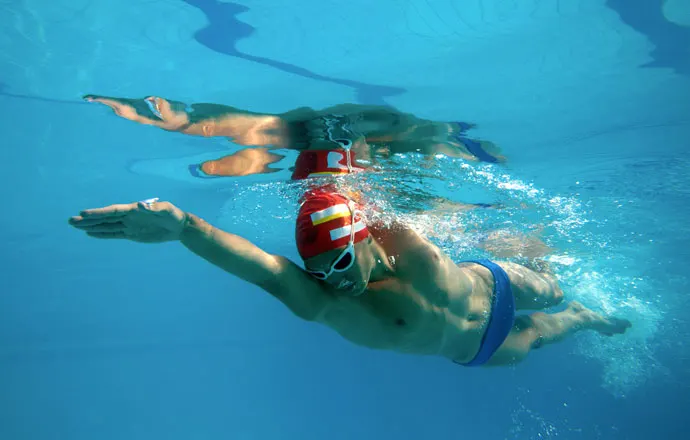
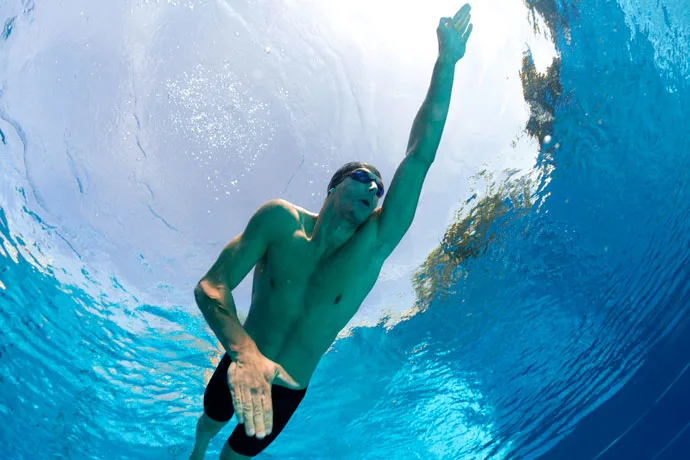
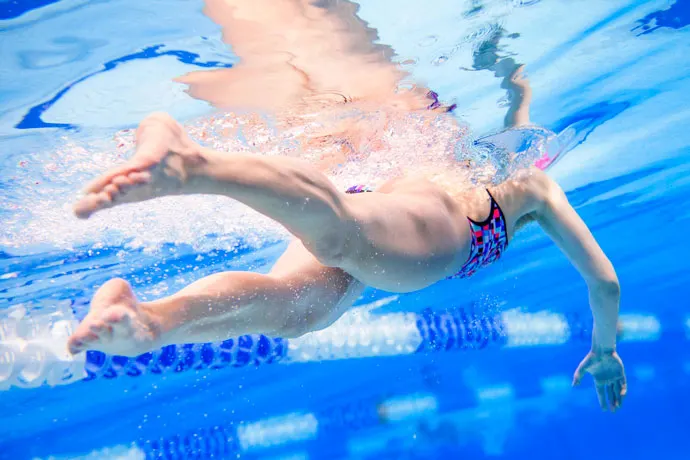
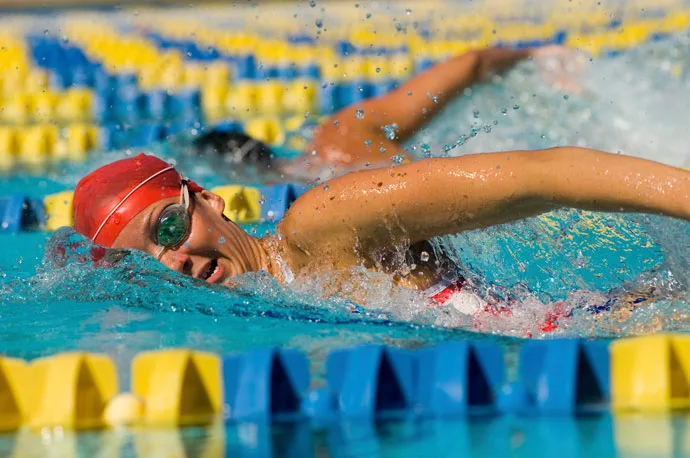
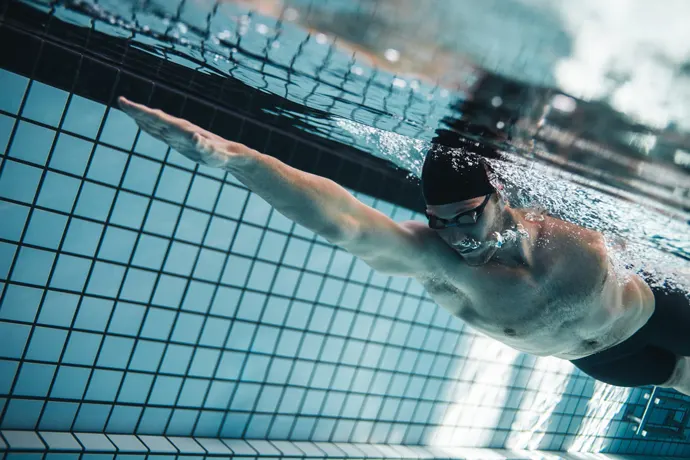
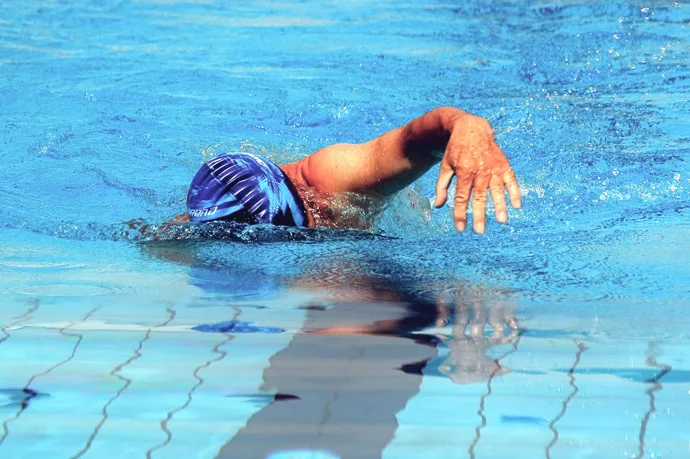
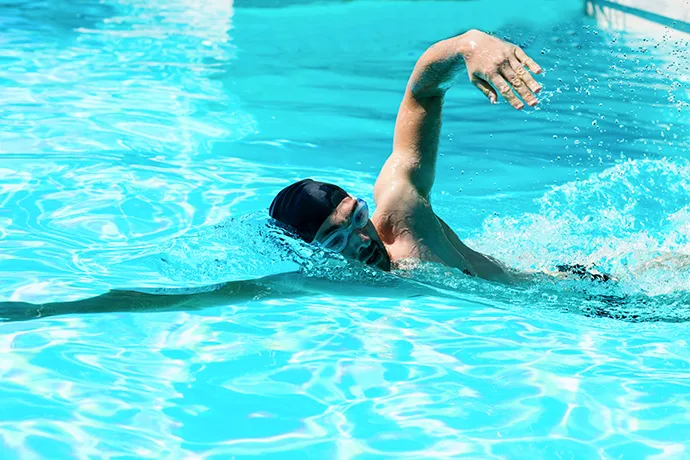
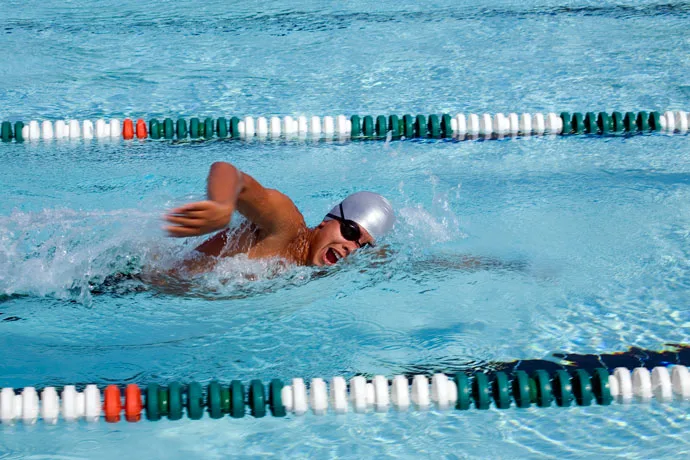
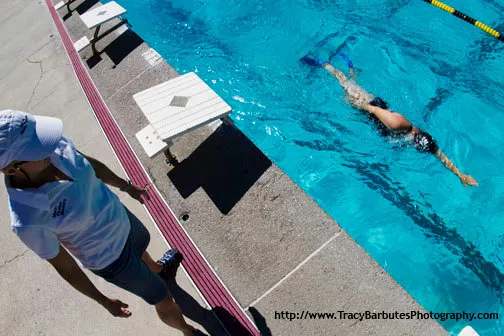
Random Fast Boi
Monday 27th of January 2020
This was useful for my school project thanks m8.
Random Fast Boi
Monday 27th of January 2020
Try to move your arms back into a straight path like how some drunk people can't seem to walk straight because their legs keep turning to a different direction from where they want to go. Likewise try to keep your arms into a straight direction to where you want to go like how you walk.
Amy
Monday 7th of January 2019
This is really good information, but I kindly ask for assistance as I can not maintain a straight line while swimming. I tend to deviate or move in a crooked way.
shanta-kaye pratt
Monday 25th of April 2016
Well I am a student and this information is wonderful.
Faisal Jamal
Wednesday 21st of May 2014
I am 27 years old and a beginner in swimming and whenever I am trying to swim freestyle, after a few strokes my hips and legs start sinking.
Also, I am practicing in the shallow end (3 ft) as my coach told me to do so. Do you think upgrading to 5 ft will help with my buoyancy?
Please give me some valuable advice.
Christophe
Monday 26th of May 2014
I would follow the advice of your coach and continue to practice in shallow water until your technique becomes reliable.
Also, have a look at the head-lead prone balance drill to see if it fixes your sinking hips problem: